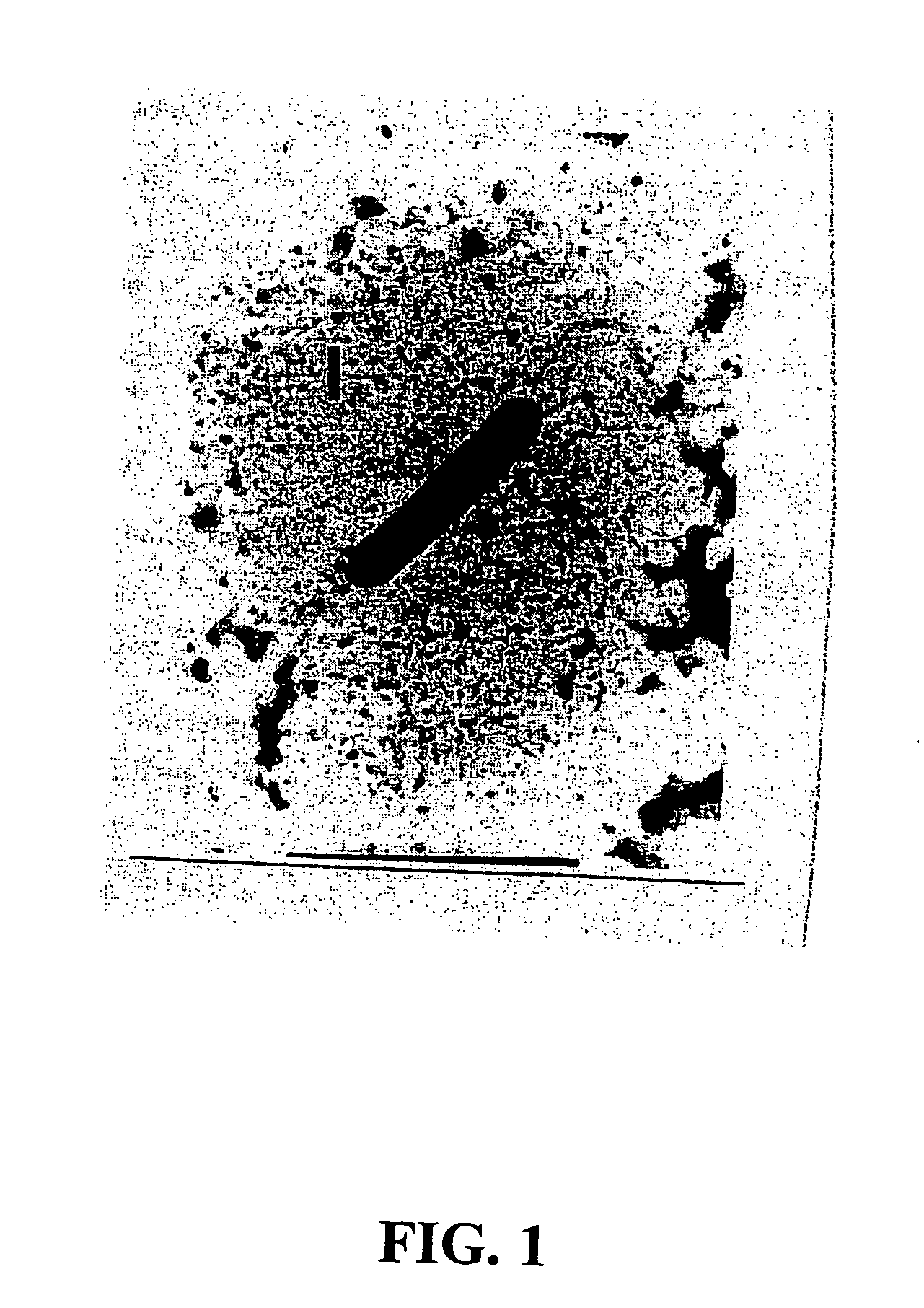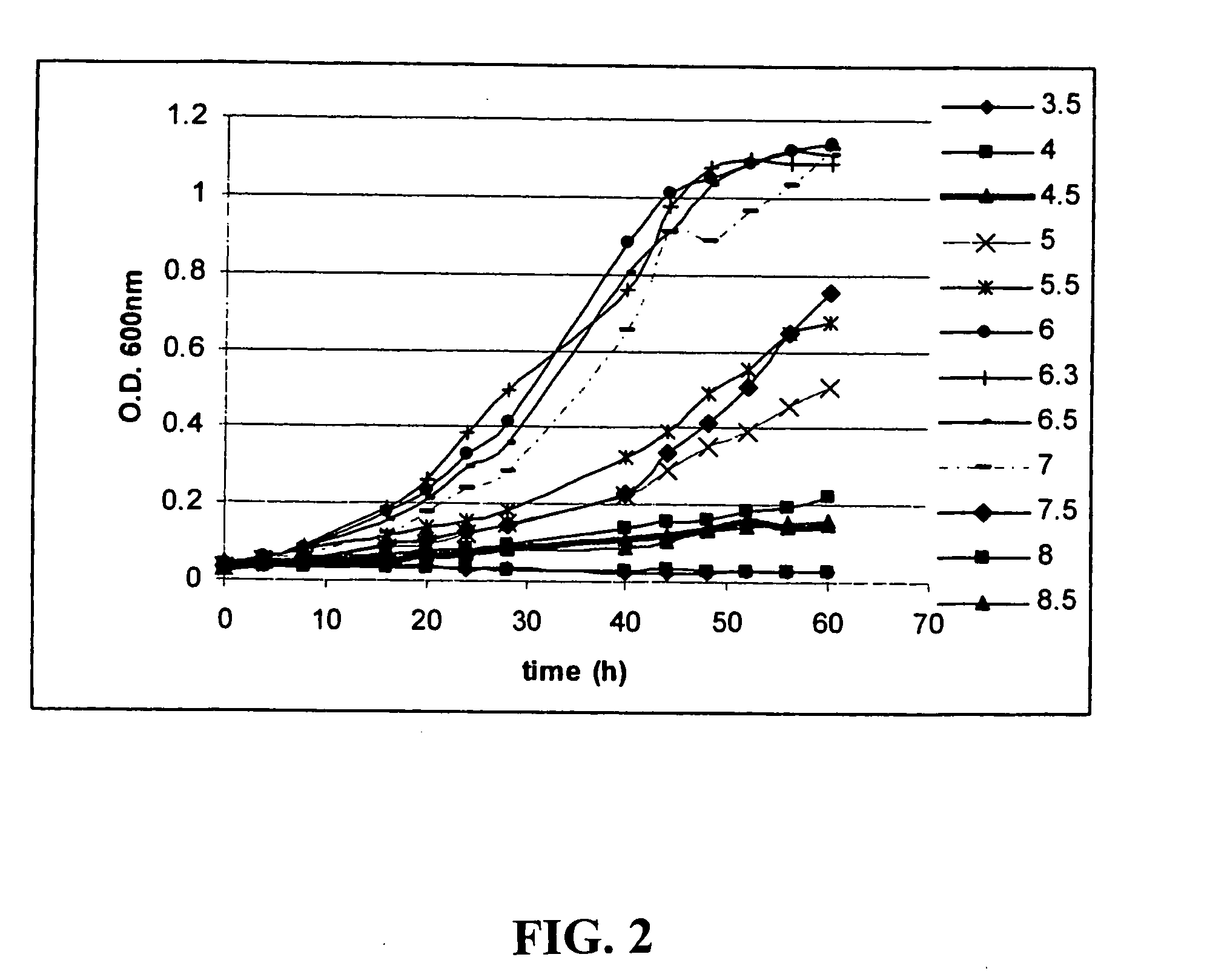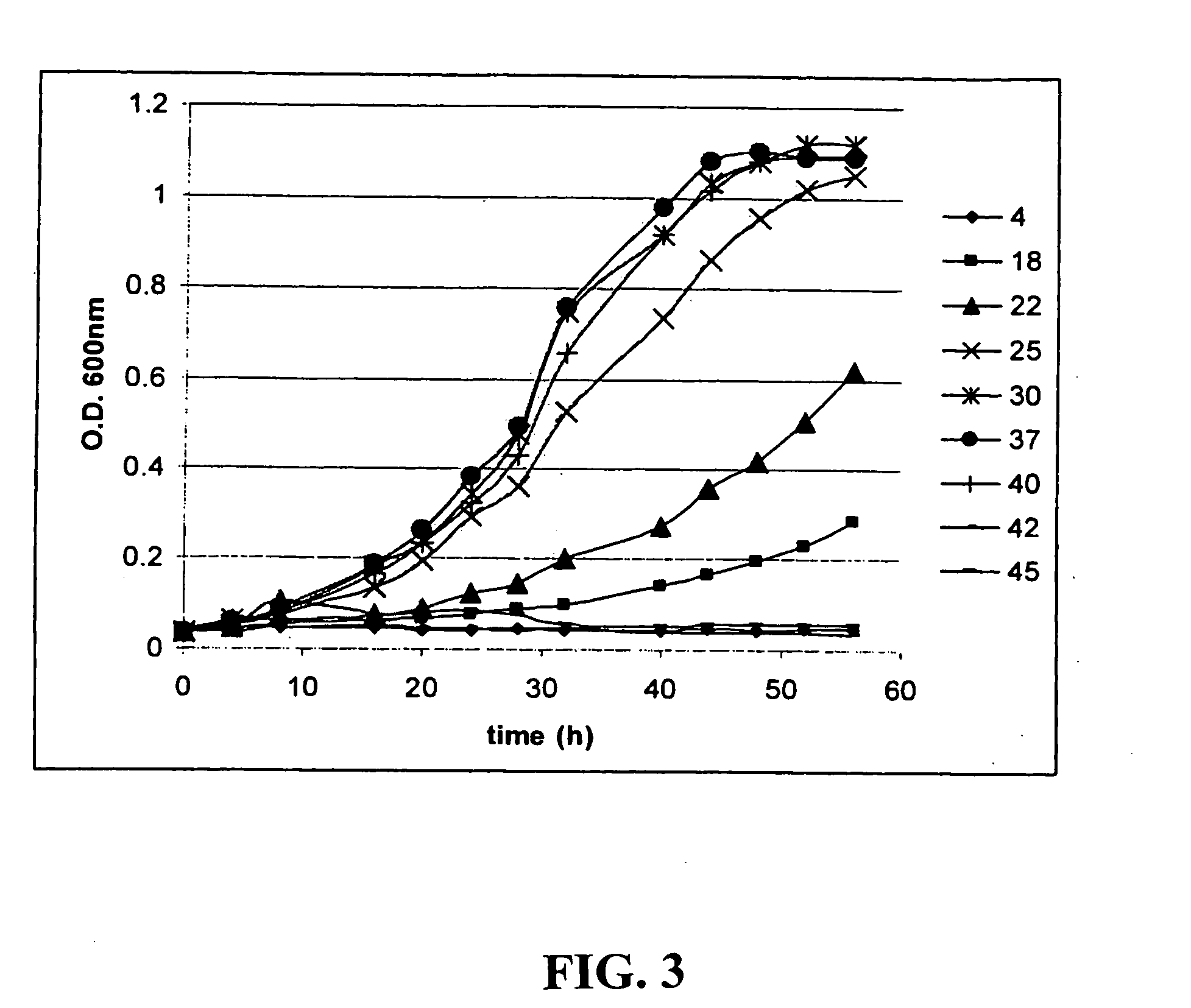Isolation and characterization of novel clostridial species
a clostridial and novel technology, applied in the field of bacteria, can solve the problems of adding pretreatment processes, adding more cost in the fields of material design, waste management, plant design, etc., and achieve the effect of high yield of valuable organic fluids
- Summary
- Abstract
- Description
- Claims
- Application Information
AI Technical Summary
Benefits of technology
Problems solved by technology
Method used
Image
Examples
example 1
[0042]In an effort to discover novel microbial catalysts capable of efficiently metabolizing syn-gas and producing ethanol, Clostridium ragsdalei, a new mesophilic, carbon monoxide utilizing, acetogen was isolated and is described hereafter. The characterization of the new organism was done in part by comparison to known Clostridium ljundahlii strain PETC
Materials and Methods
[0043]Organisms. Clostridium ljundahlii strain PETC was obtained from a fructose stock culture maintained by Dr. Ralph S. Tanner and was used as the reference control strain. Strain P11 was obtained from an anaerobic enrichment inoculated with fresh water sediment from the Duck Pond at the University of Oklahoma by a procedure described previously (Bryant, 1972) under an atmosphere of CO:N2:CO2 (75:15:10) and an initial pH of 6.0. The carbon monoxide oxidizing clostridium described within was named Clostridium ragsdalei. This bacterium was designated strain P11 and deposited with the American Type Culture Collec...
example 2
[0063]The study of improving, maximizing or minimizing effects, and certain features already found to be contained within an organism without changing its inherent properties to obtain the most desirable result could be defined as optimization. Optimization studies are a key element in developing strategies to improve growth as well as the production of a desired fermentation product. In our case, ethanol is the desired end product.
Materials and Methods
[0064]Bacterial Strain and Cultivation Media. Clostridial strain P11 was used throughout the study. Carbon monoxide medium (COM) was used to cultivate and maintain the culture. The growth temperature was 37° C. COM is an undefined buffered medium initially pressurized to 10 psi (70 kPa) with N2 / CO2 and then autoclaved for 15 minutes at 121° C. The medium contained per liter of distilled water: 25 ml mineral solution (Table 1), 10 ml trace metals solution (Table 2, 10 ml vitamin solution (Table 3), 1.0 g of yeast extract, 10 g of MES (...
PUM
| Property | Measurement | Unit |
|---|---|---|
| temperature | aaaaa | aaaaa |
| pH | aaaaa | aaaaa |
| temperature | aaaaa | aaaaa |
Abstract
Description
Claims
Application Information
 Login to View More
Login to View More - R&D
- Intellectual Property
- Life Sciences
- Materials
- Tech Scout
- Unparalleled Data Quality
- Higher Quality Content
- 60% Fewer Hallucinations
Browse by: Latest US Patents, China's latest patents, Technical Efficacy Thesaurus, Application Domain, Technology Topic, Popular Technical Reports.
© 2025 PatSnap. All rights reserved.Legal|Privacy policy|Modern Slavery Act Transparency Statement|Sitemap|About US| Contact US: help@patsnap.com



